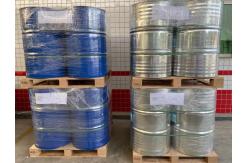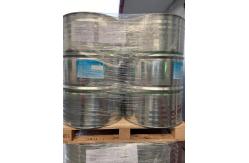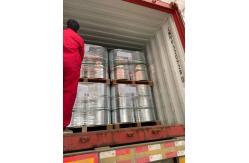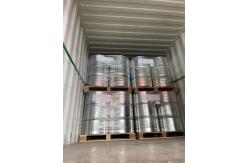Flame Retardant Electrical Insulating Epoxy Resin Casting With Hardener
|
|
Flame Retardant 10-35KV contact boxes Epoxy Resin With Hardener for Electrical Insulation Products TDS:
Epoxy Electrical Insulation System
Product data(Guideline values) * JT 8206 A modified Epoxy resin
Remark:In order to prevent the absorption of moisture,please keep epoxy resin in sealed container and storage under normal temperature (about 20 to 25℃).
JT 8206B Modified liquid hardener
Anhydride curing agents are sensitive to humidity and must be sealed immediately after the container is opened.
Storage* The components have to be stored under dry conditions at 2 - 40°C, in tightly sealed original containers. Under these conditions, the shelf life will correspond to the expiry date stated on the label. After this date, the product may be processed only following reanalysis. Partly emptied containers should be closed tightly immediately after use. For information on waste disposal and hazardous products of decomposition in the event of fire, refer to the Material Safety Data Sheets (MSDS) for these particular products.
Processing(guideline values)* System Preparation General instructions for preparing liquid resin systems Resin injection systems all hope to extend their usage time. Mix each component evenly at room temperature or slightly above room temperature under vacuum. It is particularly important to completely wet the filler. Proper mixing will result in: - Better flow properties and reduced tendency to shrinkage - Lower internal stresses and therefore improved mechanical properties on object - Improved partial discharge behaviour in high voltage applications. For the mixing of medium to high viscosity Casting resin systems and for mixing at lower temperatures, it is recommended special thin film degassing mixers that may produce additional self-heating of 10-15°C as a result of friction. For low viscous casting resin systems, conventional anchor mixers are usually sufficient. In larger plants, two pre-mixers are used to mix the individual components (resin, hardener) under vacuum. Metering pumps then feed these premixes to the final mixer or a continuous mixer. The individual premix can be stored at elevated temperature (about 60°C) for up to about 1 week, depending on formulation. Intermittent agitation during storage is advisable to prevent filler sedimentation. Mixing time can vary from 0.5 to 3 hours, depending on mixing temperature, quantity, mixing equipment and the particular application. The required vacuum is 0.5 to 8 mbar. For the application of high-pressure components, we suggest confirming the quality and pre drying of the filler first, and the humidity should be less than 0.2%.
Specific Instructions * After the work is completed, please clean the remaining mixture with resin. When restarting, the previous material needs to be removed. After the work is completed, cool the mixture in the pipeline to below 18 ° C and clean it with resin components to prevent sedimentation or unwanted increase in viscosity. If the mixture used has high activity, we recommend cleaning it daily with toughening agent JT D40.
Mould temperature APG process 130 - 160°C Demoulding times (depending on mould temperature and casting volume) APG process 10 - 30 min Cure conditions APG process (minimal postcure) 140°C/6~10h Considering exothermic reaction, internal mechanical stress, etc., the encapsulation of large castings or heat sensitive active elements can be fixed at about 80 degrees. To determine whether crosslinking has been carried to completion and the final proper-ties are optimal, it is necessary to carry out relevant measurements on the actual object or to measure the glass transition temperature. Different gel and postcuring cycles in the manufacturing process could influence the crosslinking and the glass transition temperature respectively. Process parameters(guideline values)* System:JT 820618A / JT 8206B
* Guidance values cannot be considered as product specifications. * Note: The grade and quality of silicon micro powder will affect the process number, such as initial mixing viscosity, gel time, etc
Mechanical and Physical Properties(guideline values)* Determined by standard sample at 23 ℃ Curing conditions: 80℃/4h+ 140℃/10h
Important Note The following situations replace the buyer's documents. The seller/manufacturer does not declare or warn, express or imply, including that it may be resold or used for other special purposes.
There is no statement here that can be interpreted as an inducement for infringement of the relevant patent.
Under no circumstances shall the seller/manufacturer be liable for incidental, consequential, or indirect damages arising from negligence or violation of harsh warning conditions.
Any claim for compensation due to the buyer's compensation and the seller's liability shall be based on the purchase price.
The provided data and results are obtained under controlled or experimental conditions, and their suitability for the intended use conditions of the buyer must be verified through the buyer's experiments.
This product has not been tested and validated for applications that require long-term contact with mucous membranes, abraded skin, blood, or implanted in the human body. Therefore, it is not recommended to use this product for related purposes.
Our Service:One-Stop Service
Contact Information:
|
||||||||||||||||||||
| Product Tags: Flame Retardant Electrical Insulating Epoxy Casting Electrical Insulating Epoxy Casting Epoxy Resin With Hardener | ||||||||||||||||||||
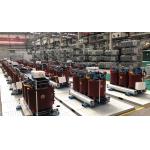
|
Dry Type Transformer Durable And Electrical Insulation For Industrial Applications |
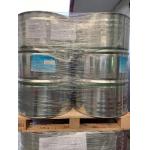
|
9000-15000 MPa.s Viscosity Electrical Insulating Epoxy Resin |
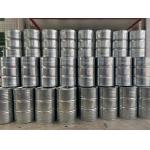
|
Low Flammability Electric Power with and Dielectric Constant of 3.5 |

|
Electrical Insulating Epoxy Resin for Electric insulators on VCB |
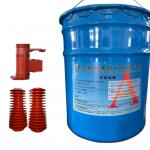
|
50Mpa Flexural Strength Vacuum Epoxy Resin Casting for and Flame Retardant Properties |
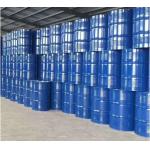
|
1675-54-3 Epoxy Resin Vacuum Preparation System with Flame Retardant Properties |

